Apple iPhone 4S: Thoroughly Reviewed
by Anand Lal Shimpi & Brian Klug on October 31, 2011 7:45 PM EST- Posted in
- Smartphones
- Apple
- Mobile
- iPhone
- iPhone 4S
Camera Improvements
Arguably the second largest hardware change (with the A5 SoC being the first and largest) in the 4S is the inclusion of a much improved 8MP camera. In case you’ve forgotten, the iPhone 4 previously included a 5 MP camera. Back when the 4 was introduced, Apple talked for the first time about backside illumination, and pixel sizes. In a later update, the camera got even better with the ability to buffer three full size images and merge to HDR in real time. This time, Apple brought up F/# and backside illumination again, and added one more thing.
Though Apple never talked about any of their optical design for the iPhone 4 camera, to the best of my knowledge the design likely was close to reference designs reported on a few lens lists consisting of four plastic elements. For the 4S, Apple has mixed things up by including its own optical design front and center, and made special note of a five plastic element design. I’ve put together a table showing the 4 and 4S in comparison based on what information is available.
Note that many have speculated that Apple is dual sourcing the CMOS sensor which seems likely, and given the sensors out there the two most likely choices are Omnivision’s OV8830 and Sony’s IMX105. Both of these have almost identical specifications, including 1.4µm pixels, a 1/3.2“ format, and an improved backside illumination process over the previous generation wafer-scale process. Omnivision’s BSI–2 process cites some specifications that seem to line up with what Apple talked about in their presentation, including better quantum efficiency (ability to convert photons into electrons), low-light sensitivity, and larger well capacity (which translates to increased dynamic range). You’ll note that the 4S uses the same sensor format as the previous generation - 1/3.2”, and includes more pixels, which results in the pixel size going down from 1.75µm to 1.4µm.
| iPhone 4 vs. 4S Cameras | ||
| Property | iPhone 4 | iPhone 4S |
| CMOS Sensor | OV5650 | OV8830/IMX105 |
| Sensor Format | 1/3.2" (4.54 x 3.42 mm) | 1/3.2" (4.54 x 3.42 mm) |
| Optical Elements | 4 Plastic | 5 Plastic |
| Pixel Size | 1.75 µm | 1.4 µm |
| Focal Length | 3.85 mm | 4.28 mm |
| Aperture | F/2.8 | F/2.4 |
| Image Capture Size | 2592 x 1936 (5 MP) | 3264 x 2448 (8 MP) |
| Average File Size | ~2.03 MB (AVG) | ~2.77 MB (AVG) |
Everybody likes talking about sensors (and I see lots of attention given to them), but any good photographer knows that it’s a combination of optical system and sensor that matters to performance. Optical design is important, and having studied as an optical engineer I find it interesting that Apple would draw attention to having a custom design of their very own with an additional plastic element. For a while I’ve held off on really talking about smartphone camera optics, but while we’re here, let’s touch briefly on them.
Thus far this generation and the one before it have primarily used 4 plastic elements, and virtually everyone but Nokia uses nothing but plastic (Nokia famously uses Zeiss-branded designs, often with glass elements). Optical design is generally driven by material availability, and there are only a few optical grade (read: transmissive in the visible) thermoplastics out there - Styrene, Polystyrene, ZEONEX, PMMA (Acrylic) and so forth - the list is actually relatively short. Thankfully polystyrene and PMMA can be used to make something of an achromatic pair, with polystyrene as a flint, and PMMA as something of a crown. Plastic provides unique constraints as well though - coatings don’t stick well, not very many have great optical properties, they have a high coefficient of thermal expansion, high index variation with temperature (which oddly decreases with increasing temperature), and less heat resistance or durability among others. With all those downsides you might wonder why smartphone vendors use plastic, and that reason is simple - they’re cheap, but more importantly, they can be molded into complicated shapes. Those complicated shapes are aspheres, which are difficult to fabricate out of glass, and afford much finer control over aberrations using fewer elements, which is an absolute necessity when working with very little package depth.
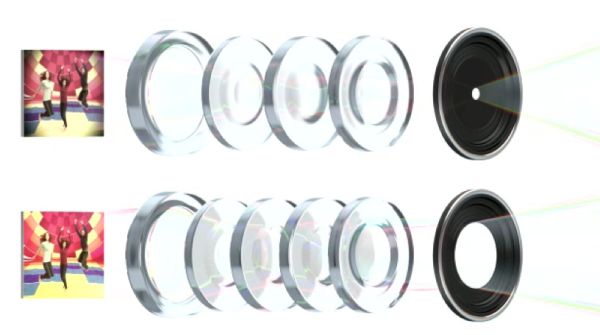 Apple's 4S versus 4 infographic
Apple's 4S versus 4 infographic
So what does adding another element get you? Well, when you’ve faced with limited material choices, adding more surfaces gives you another opportunity to balance aberrations that start blowing up rapidly as you increase F/#. That said, there are tradeoffs as well to adding surfaces - more back reflections, increased cost, and a thicker system. In the keynote, Apple notes that sharpness is improved by 30% in their new 5 element design, and MTF is what they’re undoubtably alluding to.
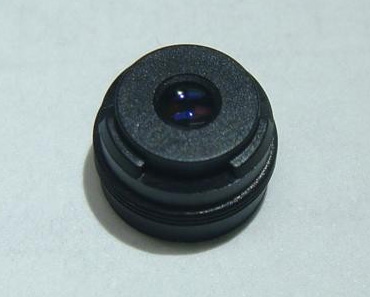
Genius electronic optical - 5P lens. Compare to above.
Genius electronic optical has a page on their website with a lens system that seems likely to be what’s in the 4S, as the specifications include 8 MP resolution (same size), same sensor format, F/# (2.4), 5 plastic elements (5P) and looks basically like what’s in the 4S. Other than that, however, there’s not much more that I can say about this Apple specific design without destructively taking things apart. One thing is for certain however, and it’s that Apple is getting serious about camera performance, something that other handset vendors like HTC (with its F/2.2 systems) are also doing.
Apple made mention that it also included an IR filter in the 4S optical design. If you recall back to our Kinect story, I used the 4 camera to photograph the IR laser structured light projector that Kinect uses to build a 3D picture. The 4 no doubt has an IR filter (though not a great one), but it’s probably just a thin film rather than a discrete filter right before the sensor. The 4S includes what Apple has deemed a ‘hybrid IR filter’ right on top of the sensor, which is possibly just a combination of UV/IR CUT filter (UV is a problem too), and an anti-aliasing filter.
If you try and take the same Kinect (IR source) picture with the 4S, thankfully all those non-visible, IR wavelength photons get rejected by the filter. This doesn’t sound like much until you realize that silicon is transparent in the IR and will bounce around off the metal structures inside a CMOS or CCD and create lovely diffraction effects on fancy sensors. I digress though since that’s probably not what Apple was trying to combat here. On a larger scale, IR will generally just cause undesirably incorrect color representation, and thus people stick an IR filter either in the lens somewhere or before the sensor, which is what has been done in the 4S. The thin film IR filters that smartphones have used in the past also are largely to blame for some of the color nonuniformity and color spot (magenta/green circle) issues that people have started taking note of. With these thin film IR filters, rays incident on the filter at an angle (as we move across the field) change the frequency response of the filter and the result is that infamous circular color nonuniformity. I wager the other effect is some weird combination of vignetting and the microlens array on the CMOS, but when I saw Apple make note of their improved IR filter my thoughts immediately raced to this ‘hybrid IR filter’ as being their logical cure for the infamous green circle the iPhone 4 exhibits.
Another minor difference on the 4S is that the LED flash is improved. The previous LED flash had a distinctively yellow-green hue, the LED flash on the 4S seems slightly brighter and also has a temperature that’s subjectively much closer to daylight, though I didn’t measure it directly. I habitually avoided using LED illumination on the 4 and will probably continue to do so on the 4S (and use HDR instead), but it does bear noting that the LED characteristics are improved. Unfortunately the diffuser and illumination pattern still isn’t very uniform or wide. It also seems that all this talk of moving the LED flash to the other side of the device to combat red eye turned out wrong as well.


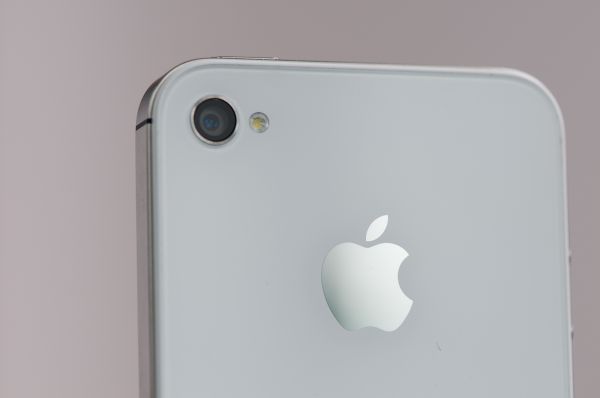
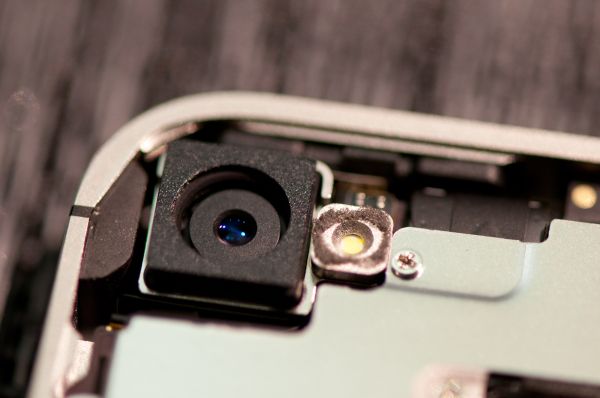
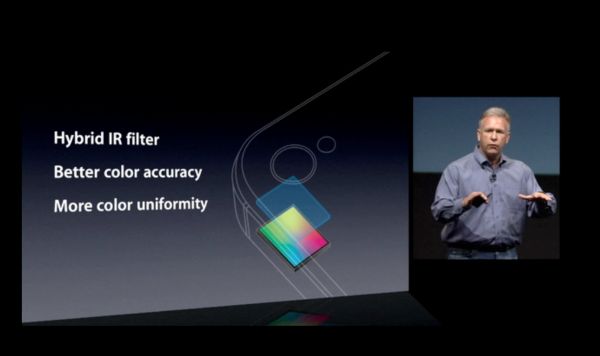








199 Comments
View All Comments
Davabled - Monday, October 31, 2011 - link
With Field test enabled, do numbers closer to zero indicate a better connection? (I'm referring to the numbers that replace the bars in the upper left corner)Anand Lal Shimpi - Monday, October 31, 2011 - link
Correct :)Take care,
Anand
Formul - Monday, October 31, 2011 - link
why the huge drop from iPad 2 to iPhone 4S in the GL benchmark pro? its only about 30% performance .... any explanation?Anand Lal Shimpi - Monday, October 31, 2011 - link
Because the number was incorrect :-P Fixed now :)Take care,
Anand
ZebuluniteX - Monday, October 31, 2011 - link
Great review as always Anand!In addition to the GL benchmark pro results Formul mentioned, I was also surprised to see the Motorola Droid RAZR for some reason do far better than other Gingerbread-based Android smartphones. It is listed as using different version of Android (2.3.5 vs 2.3.4 or older), but given that very similar results were shown between the iPhone 4S and Honeycomb-running Galaxy Tab 8.9 in your 'iPhone 4S Preliminary Benchmarks' article (where the 4S was a bit slower than the Galaxy Tab in SunSpider, and marginally faster in BrowserMark), I'm guess those are just mislabeled Galaxy Tab results. Is that the case?
Anand Lal Shimpi - Monday, October 31, 2011 - link
Thank you - be sure to thank Brian Klug as well, he really did the bulk of the heavy lifting here. I just popped in to talk about silicon and battery life.The RAZR numbers are what we ran at the RAZR announcement: http://www.anandtech.com/show/4981/motorola-droid-...
The improvement is likely due to an updated browser from Motorola. I included those numbers effectively as a placeholder until Ice Cream Sandwich arrives :)
Take care,
Anand
ZebuluniteX - Tuesday, November 1, 2011 - link
Ah, thanks for the clarification, I missed that article. Hmm, that's interesting that, apparently, Motorola "ported" Honeycomb or Ice Cream Sandwich's browser optimizations to Gingerbread (or at least I assume that's what happened)...I'm in the market for a smartphone, and while I was leaning towards the 4S since I already am in the Apple ecosystem via an iPod Touch 2G, before pulling the trigger I wanted to read the Anandtech take on it. The review was excellent as always - thanks again to both you and Brian!
Formul - Monday, October 31, 2011 - link
that was fast! i knew something was not right as there was no mention of this in the text :-)thanks for another great review, keep up the good work! :-)
zanon - Monday, October 31, 2011 - link
The article wrote "The expectation that Apple will always deliver more than just a hardware upgrade is likely what made Siri a 4S exclusive."While only time will tell for sure, it seems quite possible that graduated ramp up had a bigger role to play here. As you say, most of the heavy duty lifting for Siri is going on server-side, and in turn local processing needs aren't too bad. However, the natural flip side of that of course is that the server-side infrastructure is required for the service to work at all, and resources aren't unlimited there either. Even with it limited purely to 4S users, Siri still had some availability problems in the first few days as millions activated and tried to user it simultaneously. It's not hard to imagine what would have happened if every single one of the tens of millions able to upgrade to iOS 5 *also* tried to start using it immediately. Apple has built a huge data center and that's all well and good, but nothing substitutes for actual working experience when it comes to massive software services.
By limiting the initial rollout, Apple can do performance profiling, get an idea of average loads after initial "let's try it" dies down, and so forth. Staggering a rollout also means being able to plan for the general load rather then suffering the classic and well known double-bind of
A) Building for a peak load, and ending up being left with a lot of extraneous hardware that barely gets used.
B) Building for the average, then suffering from embarrassing and headline generating outages for a week or two.
It's true they could just decide to keep it 4S only, but given they are still selling the iPhone 4, and probably make plenty of profit on that now very mature device, I think there is a decent chance they'll roll it out to a wider audience down the road.
Also, a few typos:
Page 2:
I think the phrase is "pretty much par for the *course* for Apple..." rather then "par for the case".
Pg 9, WiFi:
"...newest WLAN, Bluetooth, and FM *cobo* chip" should I think be "combo".
Pg 15:
...4S, without a (big blank, presumably some sentence was supposed to go here?)
Pg 16:
"aren't simply *academical*" should be "academic".
Again, great review, thank you.
Anand Lal Shimpi - Monday, October 31, 2011 - link
That's a very good point, I will add it to the discussion. The sinister view is to assume Apple did it to differentiate, the balanced view takes into account infrastructure, which is exactly what you did here :)And thanks for the corrections :)